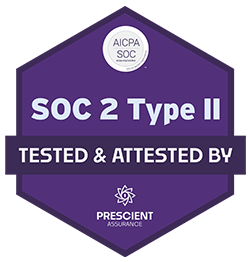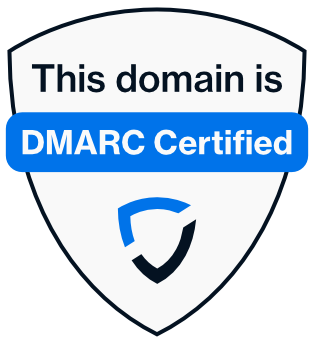Blog article
- 23 January 2025
- 8 minutes read

- Kiara Saloojee
- DMARC Enthusiast
MTA-STS: Elevating organizations' email security strategies

Email can be a weak spot for businesses, as it’s often targeted by cyberthreats like Man-in-the-Middle (MitM) and Simple Mail Transfer Protocol (SMTP) downgrade attacks. Luckily, strong email security methods like Mail Transfer Agent Strict Transport Security (MTA-STS) can help protect against these risks.
Learn how the protocol works and why it’s important for safe email communication.
MTA-STS protocols & commands
- SMTP: This is the basic protocol for sending emails over the internet. SMTP handles the transmission of emails between servers, enabling messages to move from the sender’s email server to the recipient’s email server. While it’s essential for email delivery, it doesn’t have built-in security features, which makes emails vulnerable to interception.
- Domain Name System (DNS): DNS helps transform domain names into IP addresses that computers use to identify each other on the network. It stores TXT records that contain information about a domain, such as the policies for MTA-STS, Domain-based Message Authentication, Reporting, and Conformance (DMARC), Sender Policy Framework (SPF), and DomainKeys Identified Mail (DKIM).
- Transport Layer Security (TLS): TLS is important because it encrypts data sent via the internet to prevent others from reading it. TLS also secures web browsing and messaging, making it a key part of online safety.
- STARTTLS: SMTP starts unencrypted. The STARTTLS command communicates to email servers that the email client wants to upgrade an insecure connection to a secure one using TLS.
Explaining MTA-STS
What is MTA-STS?
How does it work?
MTA-STS is a way for domain owners to publish a policy that instructs SMTP servers that communication with this domain must be encrypted. It includes information like:
- How long the policy is valid for
- If using TLS encryption is required or optional
- How to report connection issues
The policy is shared in two ways: as a DNS TXT record and as a file on a web server. When one email server wants to send a message to another that uses MTA-STS, it first checks the recipient’s DNS TXT record for a policy. If found, it fetches the policy from the web server and follows the rules.
Testing vs. enforce mode
- Testing mode: When MTA-STS is in testing mode, it validates connections but doesn’t enforce strict TLS requirements. Emails can still be delivered even if the recipient’s domain doesn’t use MTA-STS. The sender will report the failure over SMTP TLS reporting if enabled.
- Enforce mode: In enforce mode, MTA-STS strictly follows TLS requirements. If the senders don’t use TLS when communicating with this domain, the email won’t be delivered. This ensures strong security but needs to be set up and tested carefully before enabling.
It’s usually a good idea to enforce the policy, but we suggest beginning with testing mode first. This allows you to analyze TLS Reports (TLS-RPT) to see how MTA-STS is working before moving to enforcement. This way, organizations can check how MTA-STS performs and fix any problems before fully enforcing the policy.

Key features of MTA-STS
Benefits of MTA-STS
- Stronger email security: By enforcing TLS, MTA-STS improves the likelihood that emails are only sent over secure, encrypted connections, keeping them safe from interception and tampering.
- Reducing MitM attacks: MTA-STS helps stop attackers from tricking email servers into using unsecured connections, effectively blocking this type of MitM attack. In 2024, researchers reported that 23% of identity-related incidents were due to these attacks.
- Regulatory compliance: Many industries have strict rules on data protection, and MTA-STS can help businesses comply with legal standards regarding the safety of sensitive information.
Drawbacks of MTA-STS
- Reliance on DNS: MTA-STS relies heavily on the security of DNS to publish its policies. If the DNS security is compromised, the MTA-STS policy is at risk.
- Complex implementation: Setting up MTA-STS involves multiple detailed DNS configurations, which can be tricky and potentially lead to mistakes that expose vulnerabilities.
- Adoption rates: For MTA-STS to work effectively, both sending and receiving email servers need to use it. If only one side uses it, it’s limited in effectiveness.
MTA-STS with Sendmarc
At Sendmarc, we understand how important strong email security is in fighting cyberthreats. Our DMARC management platform includes MTA-STS management to enhance TLS encryption in email traffic between servers. This helps to protect against email interception and tampering. Here are some other advantages your company can benefit from with our DMARC management platform:
- Monitoring: The SMTP TLS Dashboard will show the number of successful TLS connections between your business’s email server and the server you’re connecting and communicating with.
- Ease of implementation: Setting up MTA-STS can be complicated, but our platform makes it easy. Organizations can configure, manage, and update their MTA-STS policies through an easy-to-use dashboard.
- Comprehensive reporting: Sendmarc offers SMTP TLS reporting data consolidation and enhancement and provides actionable insights based on findings.
Sendmarc is dedicated to keeping up with the latest in email security. As new threats emerge and security protocols change, our DMARC management platform will keep adding advanced measures. Cybersecurity experts were logging over 530 alerts of potential attacks per second in 2023, showing the need for increased support.
Take advantage of Sendmarc’s cybersecurity solutions to keep your organization safe against email attacks. Secure your email systems today by booking a demo with Sendmarc.






